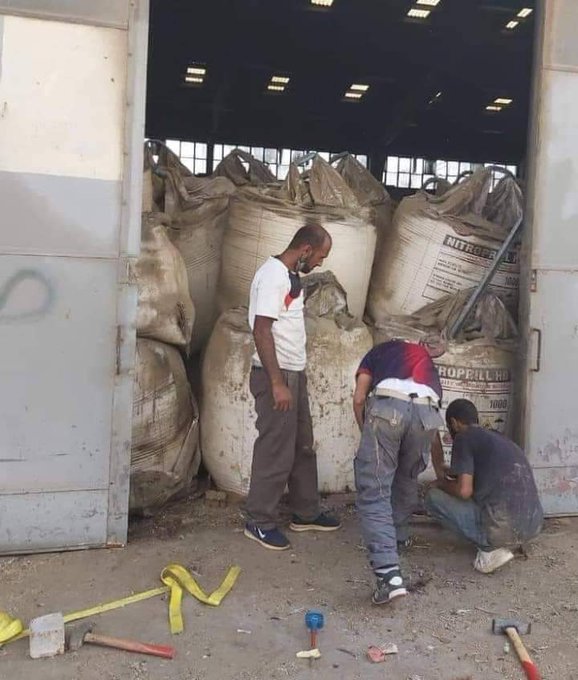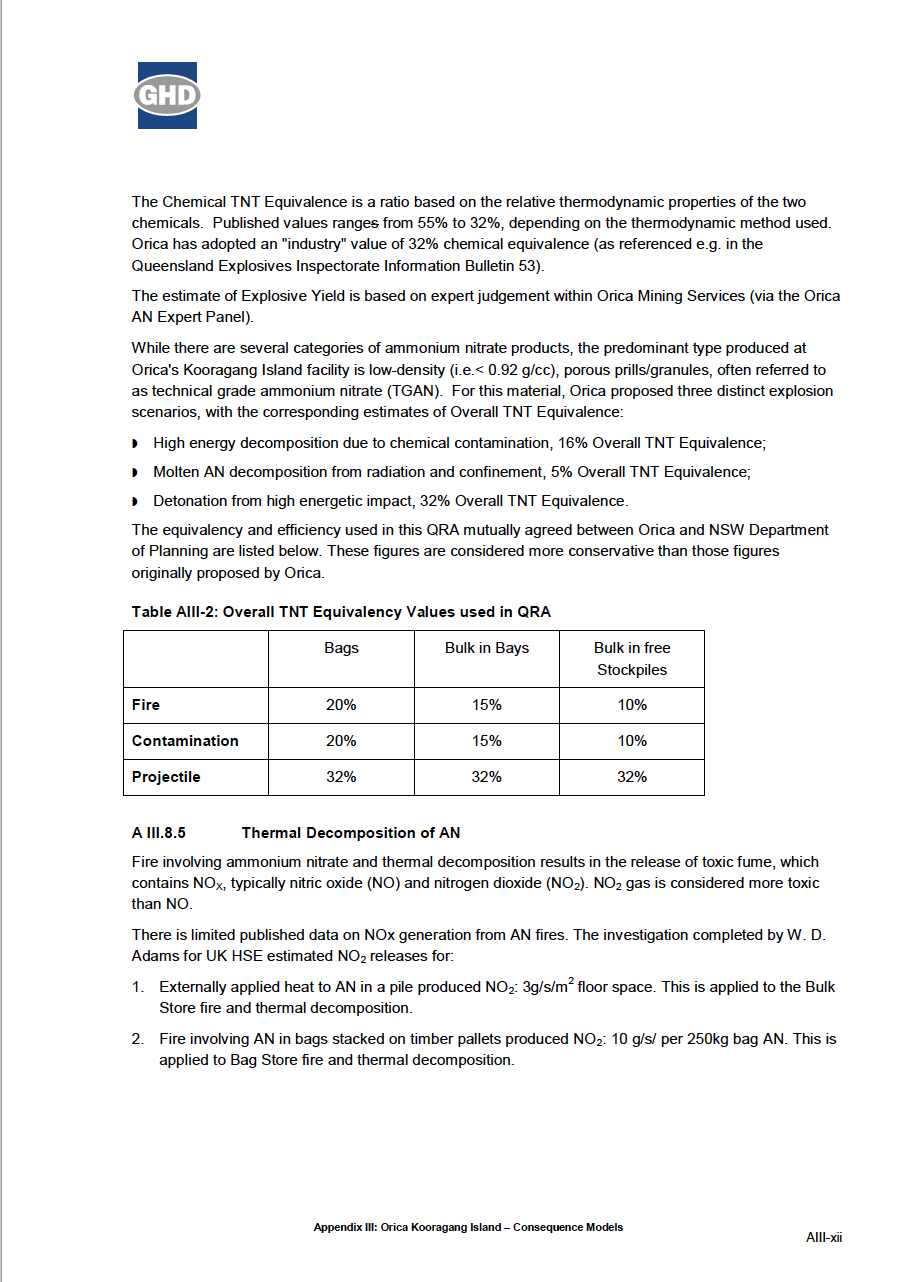
02Pilot said:
In reply to Mr_Asa :
If that map is even close to accurate, we're talking about something on the order of a good size nuclear device surface detonation, at least in terms of blast effect - considerably larger than Hiroshima or Nagasaki. I'm in no way suggesting that it was such a device, but rather just pointing out that the blast effects are in that order of magnitude. And there appears to be some question of a chemical cloud as a result of the explosion as well.
02Pilot said:
In reply to Mr_Asa :
Latest I've been able to find suggests the initial fire was on a ship carrying fireworks, which then spread to the warehouse. The official figure is 2,750 tons of ammonium nitrate, which, if accurate and it all went up, probably puts the blast effect as something in the neighborhood of 1Mt yield equivalent (for reference, Hiroshima was 15kt), which more or less squares with the radii shown on the map. Obviously there are differences - flash burns don't seem to be evident in most victims, for example, which would be widespread in a nuclear detonation - but strictly in terms of blast damage this is a hell of a shot.
Yeah, I would wager that map isn't accurate. The Chemical cloud is Nitrogen dioxide - a reddish-brown gas above 21.2 °C (70.2 °F)
Per the manufacturer of Nitroprill HD, it has about 15% TNT equivalent yield, so with 2750 tons stored in a warehouse you'd be looking at about 412 Tons or 0.000412Mt.
1 Megaton would have left a 90m deep crater 190m in diameter.


It's got a lot of nitrogen in it, so it's a great fertilizer. But it's also got a lot of nitrogen in it, which makes it a great explosive.
In reply to red_stapler :
Agreed the map may be terribly overstating the levels of damage (and the definitions used may also be inconsistent). The lack of crater is interesting, but I suppose the nature of the explosive may have something to do with that.
As far as the equivalence of ammonium nitrate to TNT, per the document you posted I suppose the nature of the detonation is rather important to the value applied. If the ammonium nitrate blew because of fire the ~15% number seems reasonable, but if the ship that was the source of the fire blew up and a projectile from it triggered a secondary explosion, perhaps the conditions are such that the 32% figure is more relevant.
Lots of unknowns to be sure. Once there are more accurate surveys of damage in the area we'll know more about the real power of the explosion.

STM317
UberDork
8/5/20 7:11 a.m.
Looks to me like there's a decent crater near the heavily damaged side of the grain silos. It's just been filled in by the nearby water.


Reports estimate something like 85% of the wheat in the country was stored in those silos...And their economy was in shambles before this...and of course the port to unload anything coming in is devastated.
So this single event has strained their infrastructure, hurt the food supply of a struggling and irritated populace, and damaged half the capital city on top of the economic tensions, covid struggles, etc. I'm not suggesting this was more than an accident, but I'm also not sure you could do much better if you were trying to harm the country.
i have to say I'm impressed with the grain structure that was sitting next to the epicenter. The fact that its even still standing is impressive.
Obviously thoughts go out to those that were affected by this. That was a helluva boom.
In reply to STM317 :
Not trying to flounder, but this is also kind of why a lot of places have zoning laws.
bobzilla said:
i have to say I'm impressed with the grain structure that was sitting next to the epicenter. The fact that its even still standing is impressive.
Obviously thoughts go out to those that were affected by this. That was a helluva boom.
Grain is also potentially explosive, wouldn't be surprised if it was built similarly to explosive storage warehouses, extremely strong walls and a weak roof.

wae
UltraDork
8/5/20 9:19 a.m.
Mr_Asa said:
bobzilla said:
i have to say I'm impressed with the grain structure that was sitting next to the epicenter. The fact that its even still standing is impressive.
Obviously thoughts go out to those that were affected by this. That was a helluva boom.
Grain is also potentially explosive, wouldn't be surprised if it was built similarly to explosive storage warehouses, extremely strong walls and a weak roof.
I think it might be fair to say that, at least in this case, it was not built similarly to explosives storage warehouses.
Maybe I should have said I wouldn't be surprised if the grain storage was built similarly to properly designed explosive storage warehouses?

Duke
MegaDork
8/5/20 9:34 a.m.
I've been watching all the videos, and all I can say is daaaaaayum, not sure when I've seen an explosion that big in my memory. What a shame.
There was an old grain silo structure next to I-95 in Philly that was demolished about 20 years ago (maybe longer). There was so much reinforcing steel it took over a year to get slowly picked apart.
I am sure the concussive force of the blast cracked the concrete, but it doesn't surprise me at all the building is still standing.
I can also imagine some internal bureaucratic conversations about the inadequate ammonium nitrate storage, "you know... we should really move this stuff out of here. This is an accident waiting to happen..." ... "Yes... Yes, we should... We'll put some funding for that in the next annual budget..." and then that gets cut as "not critical to operations"... and then that conversation happening every year.
02Pilot said:
In reply to red_stapler :
Agreed the map may be terribly overstating the levels of damage (and the definitions used may also be inconsistent). The lack of crater is interesting, but I suppose the nature of the explosive may have something to do with that.
As far as the equivalence of ammonium nitrate to TNT, per the document you posted I suppose the nature of the detonation is rather important to the value applied. If the ammonium nitrate blew because of fire the ~15% number seems reasonable, but if the ship that was the source of the fire blew up and a projectile from it triggered a secondary explosion, perhaps the conditions are such that the 32% figure is more relevant.
Lots of unknowns to be sure. Once there are more accurate surveys of damage in the area we'll know more about the real power of the explosion.
32% would still have put the upper limit of the explosion at about .8Kt. Well shy of Hiroshima etc. that was initially speculated.

wae
UltraDork
8/5/20 9:47 a.m.
Ian F (Forum Supporter) said:
I can also imagine some internal bureaucratic conversations about the inadequate ammonium nitrate storage, "you know... we should really move this stuff out of here. This is an accident waiting to happen..." ... "Yes... Yes, we should... We'll put some funding for that in the next annual budget..." and then that gets cut as "not critical to operations"... and then that conversation happening every year.
The worst part about that scenario is that it is not unique to Lebanon. I can see in my mind's eye that very conversation happening in pretty much any bureaucracy around the world, public or private, first-world or third-world, rich or poor.
In reply to STM317 :
Yeah there's absolutely a crater...


wae said:
Ian F (Forum Supporter) said:
I can also imagine some internal bureaucratic conversations about the inadequate ammonium nitrate storage, "you know... we should really move this stuff out of here. This is an accident waiting to happen..." ... "Yes... Yes, we should... We'll put some funding for that in the next annual budget..." and then that gets cut as "not critical to operations"... and then that conversation happening every year.
The worst part about that scenario is that it is not unique to Lebanon. I can see in my mind's eye that very conversation happening in pretty much any bureaucracy around the world, public or private, first-world or third-world, rich or poor.
Absolutely. I often live in that bureaucracy and have been witness to similar conversations. There's also resistance to fixing a problem that "might" happen. Granted, it's often easier in the private sector as glaring situations like this are often fixed after the underwriting insurance company learns about it. As public entities are generally "self-insured" the can is easier to kick down the road.
Didn't China have a huge port explosion last year that they kept all hushed up?
Ian F (Forum Supporter) said:
There was an old grain silo structure next to I-95 in Philly that was demolished about 20 years ago (maybe longer). There was so much reinforcing steel it took over a year to get slowly picked apart.
I am sure the concussive force of the blast cracked the concrete, but it doesn't surprise me at all the building is still standing.
I can also imagine some internal bureaucratic conversations about the inadequate ammonium nitrate storage, "you know... we should really move this stuff out of here. This is an accident waiting to happen..." ... "Yes... Yes, we should... We'll put some funding for that in the next annual budget..." and then that gets cut as "not critical to operations"... and then that conversation happening every year.
It is possible that, because it was confiscated, it was wrapped up in some other type of bureaucracy than budgetary restrictions.
You know, people often go on about regulations and them being headaches... Looks like there should have been some tighter ones...
Going to to be a LOT of asking WTF THAT much of an explosive substance was doing in one place in that big of a city. (and rightfully so!)
A good example of when "it'll be fine" goes very wrong.
In reply to Mr_Asa :
Probably a bit of both. I'm just sure somebody recognized the storage situation was a problem and needed to be corrected.
In reply to STM317 :
Quick google maps calculation that grain silo shows about 800' in length. That crater is almost as large as that, so figure 600' across. 190 meters would be 623 feet. I'd say this was more than a 0.0041Mt explosion. The depth of that crate is unknown because ocean.
Apexcarver said:
You know, people often go on about regulations and them being headaches... Looks like there should have been some tighter ones...
Everyone is for laissez Faire system until they realize there is anti-freeze in their gatorade.. because it's cheaper than corn syrup or somethign silly..
Random note. Big grain silos/bins are usually built to withstand explosions.. Cause they happen.
https://www.world-grain.com/articles/10859-grain-operations-preventing-grain-dust-explosions
The problem is regulations get weird when govt agencies are involved. If the ammonium nitrate was confiscated by the port authority or similar agency, they aren't necessarily under the same rules that would generally apply to a private firm. They tend to operate under their own set of rules.

Grizz
UberDork
8/5/20 10:44 a.m.
You guys are overthinking it quite a bit. The best bet is that it was stored there "temporarily until suitable storage was found" and then promptly forgotten about.
In reply to Grizz :
My understanding is the ammonium nitrate was seized in 12' and letters subsequently sent to the port authority each year, for several years in a row, to have it removed and stored at a safer site.
In reply to Fueled by Caffeine :
I've seen the aftermath of grain dust explosions. it's wild to think of.












































